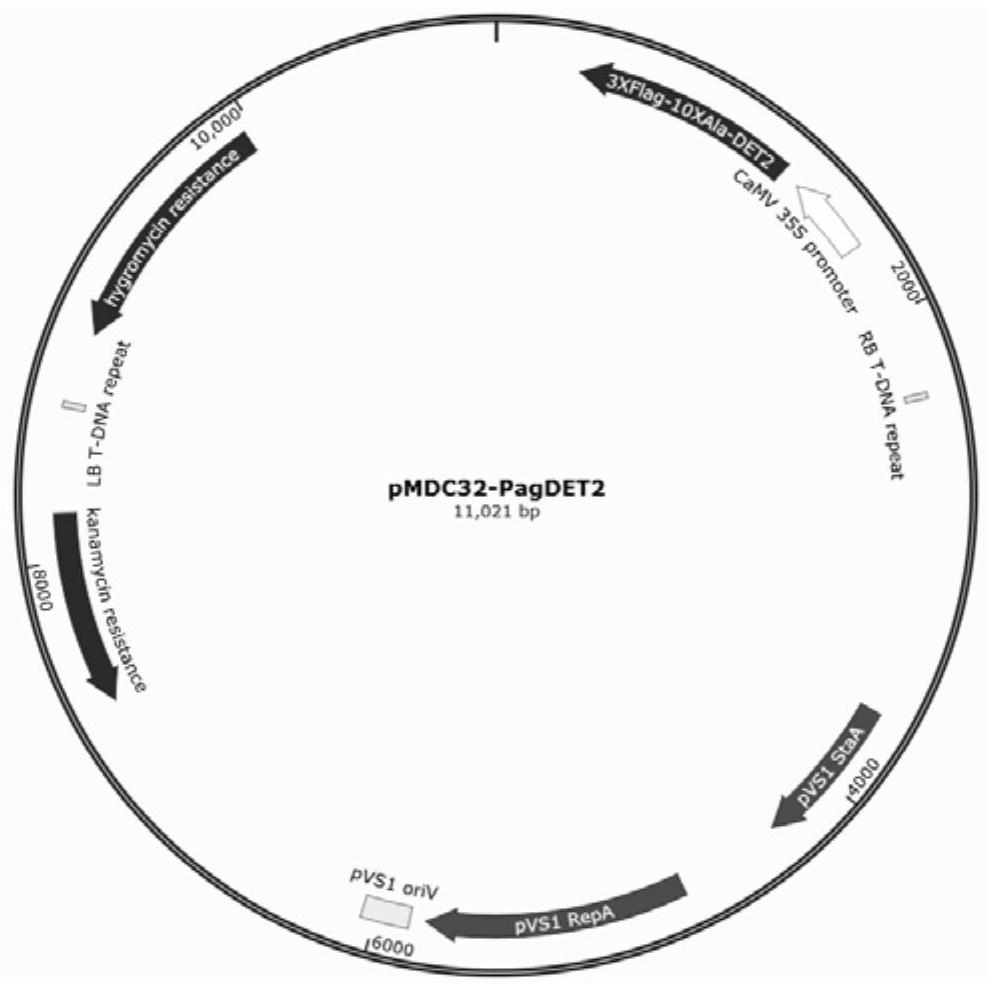A rate-limiting gene for brassinolide synthesis regulating poplar wood formation and its application
A technology of brassinosteroids and genes, applied in the fields of application, genetic engineering, plant genetic improvement, etc., can solve problems such as accelerating forest tree breeding, and achieve the effect of increasing the number of cells
- Summary
- Abstract
- Description
- Claims
- Application Information
AI Technical Summary
Problems solved by technology
Method used
Image
Examples
Embodiment 1
[0034] Step (1): Cloning the PagDET2 gene
[0035] Using 84K (P.alba X P.glandulosa) Populus alba as material, use RNeasy Plant Mini kit and RNase-free DNase I kit (Qiagen, Hilden, Germany) to extract the total RNA of tissue culture plantlet 84K; each sample About 2.0 μg of RNA was synthesized by using SuperScript III first-strand synthesis system (LifeTechnologies, Carlsbad, CA, USA) to synthesize the first strand of cDNA; refer to the published Populus trichocarpa genome sequence, and use Primer3 software to design primers (the amplicon contains the initial codon and stop codon) for full-length amplification of the gene (GATEWAY linker is introduced into the primer);
[0036] Wherein, the PagDET2 CDS forward primer is (such as sequence 4 in the sequence listing), see Table 1 below;
[0037] Table 1
[0038]
[0039] The PagDET2 CDS reverse primer is (such as sequence 5 in the sequence listing) see Table 2 below;
[0040] Table 2
[0041]
[0042] The high-fidelity PC...
PUM
 Login to View More
Login to View More Abstract
Description
Claims
Application Information
 Login to View More
Login to View More - R&D
- Intellectual Property
- Life Sciences
- Materials
- Tech Scout
- Unparalleled Data Quality
- Higher Quality Content
- 60% Fewer Hallucinations
Browse by: Latest US Patents, China's latest patents, Technical Efficacy Thesaurus, Application Domain, Technology Topic, Popular Technical Reports.
© 2025 PatSnap. All rights reserved.Legal|Privacy policy|Modern Slavery Act Transparency Statement|Sitemap|About US| Contact US: help@patsnap.com



